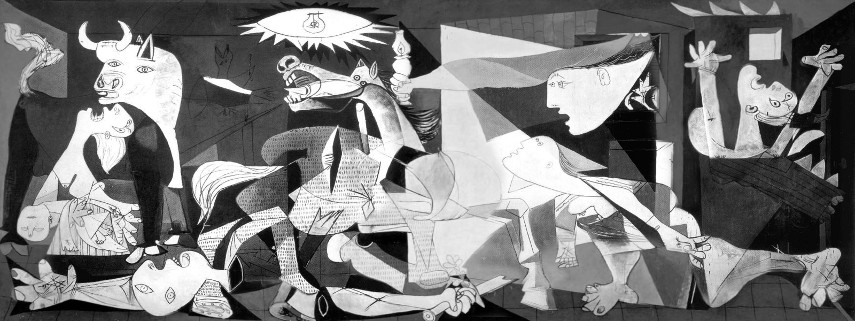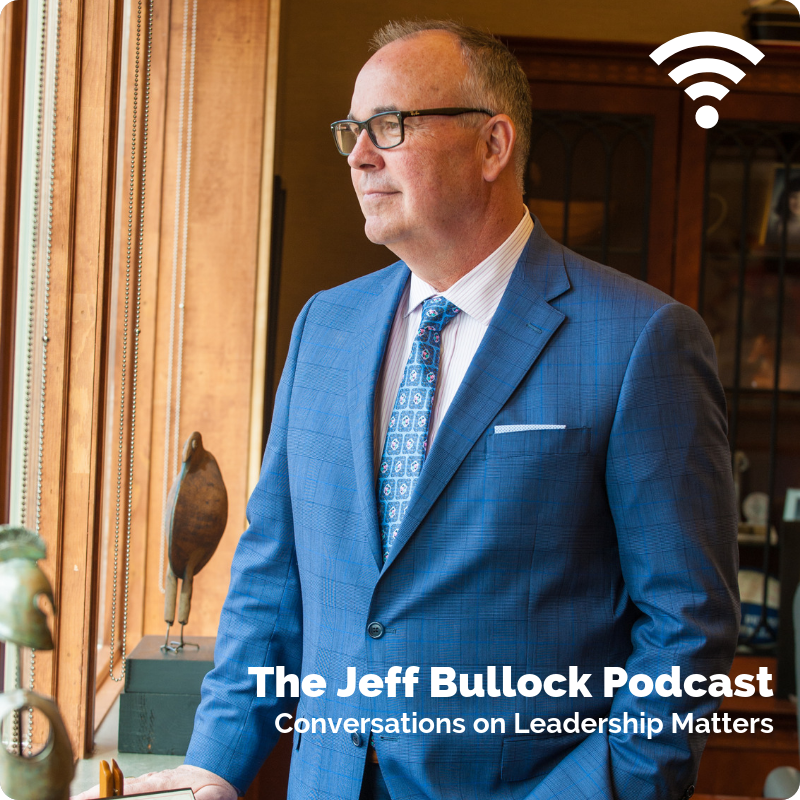Have you ever noticed that art has a way of upsetting politicians? For centuries – documented from the French Revolution in 1789 to today – dictators and monolithic regimes have always known what to do. It must be in every Machiavellian playbook. “First, kill the artists, the poets, and writers.” No one needs to ask why; we all know. The power of the visual and written image is ever-so-much greater than a tyrant’s Kalashnikov. Who knew artists were so dangerous?
I was reminded of the pure power of art, again, as I recently had the opportunity to lead 18 University of Dubuque students, staff, and faculty to Spain for our first international art and culture trip in two years. (I’d love to say ‘post-Covid’ but the track record of my crystal ball is not that outstanding.) We left Dubuque, Iowa on Day 3 of the Ukraine war, and on Day 5, we were standing in front of Picasso’s 1937 Guernica at Madrid’s Museo Reina Sofia.
This was déjà vu.
I grew up, art historically and politically, in front of Guernica at the Museum of Modern Art in New York in the 1970s, where Picasso had temporarily loaned it until such time that the fascist dictator of Spain, Franco, was no longer in power. I was there, sitting on the broad horizontal seat in front of this massive 11.5’ x 25.5’ painting, on a regular basis. I knew the guards’ names and we joked from time to time. They wondered why I was always there (it is New York, after all).
The painting always hit you as you lumbered up the wide staircase to the second-floor gallery. It was probably deliberately put there by the curators for shock value. Of course, you could continue onto the Cubist, Dada, Surrealist works beyond – but first, you had to pass through the vortex that contained this painting (and its dozen or so studies that were hanging on walls to the left and right). But you’d never be the same.
I remember a two-week episode in front of it, trying to read Thomas Mann’s Doctor Faustus (in German) in front of Guernica. Look, I’m not a polyglot and I had to pass my German reading exam in grad school but had never taken this language. I figured the best way to learn German would be to read it in a story that I was already familiar with. It was only slightly painful. (Incidentally, I did pass on the first try.)
Some artworks are magnets to political issues, and I can’t think of a better one than Guernica. We had a timed appointment to see the painting on Sunday, but when we did our 2-mile walk to the museum, we found it closed. Hmmm. I got on the phone and arranged a viewing for the group on Monday. Why so is this one work so important?
You can easily read about the genesis of the painting after the small town (the picture’s namesake) was wiped out by the first use of indiscriminate bombing by military planes. Today, we hear about corridors of safety, concern for civilian non-combatants. There were no phrases like that back in 1937. No one had dared total destruction of an entire village – women, children, everything. Well, not exactly ‘no one’. The plans were Franco’s and the planes were Hitler’s.
In those halcyon days when I was a grad student, I loved studying in Guernica’s shadow. It seemed like light was emanating from the canvas. I wasn’t there all the time, of course, and there were times I wished I had been there but wasn’t (school and life, you know). I wasn’t there when activist Tony Shafrazi spray-painted “Kill Lies All” in 1974. But I was there and active during multiple protests of the Vietnam War when we displayed posters of Guernica outside MoMA and other venues in NYC as we marched to protest the US involvement in Vietnam and the anniversary of the My Lai massacre. No need for words or slogans. The image was loud enough.
Picasso died in Spring 1973; Franco in Fall 1975. Things happened quickly after that. Tom, a guard at MoMA, called me one night and murmured in Tom Clancy CIA-style, “We’re moving Guernica tonight. It’s going home,” then hung up. This painting was controversial when it was completed in 1937 and was still controversial in the late 1970s.
So after 42 years in the US, Guernica finally made its way to Spain in 1981. For a decade it was displayed in an annex of the Prado Museum (Casón del Buen Retiro) until finally resting where it is today, at the Museo Reina Sofia (just across the boulevard from the Prado in a repurposed old hospital).
And that’s where our students saw it. As massive and powerful as I remember.
And, unfortunately, still relevant. In fact, probably more so, at least for our students. It’s a huge monochromatic image, just blacks, and white. In Picasso’s depiction, abstraction serves the story well.
You can enter the painting from the left or right, but I prefer the left.

On the left is a woman with her dead child in her arms. Her distorted and contorted face reveals her immense grief. Even her eyes have relocated in such grief, making them tears as likely as eyes. Some Picasso scholars suggest the figure is a Pietà (meaning ‘Pity’ with the Virgin Mary cradling a dead Christ); others see this group as a metaphor for all of Spain suffering in a brutal war. I don’t buy those interpretations. This is just a young mother in the village who has faced the most painful reality of war on this April day. Like the residents of Kyiv.
Above her is the bright head (and darker body) of the bull, a traditional symbol of raw power in the Spanish bullfight. Faced with this destruction, the animal once noble is still and virtually meaningless. The horse, often seen as a feminine symbol and therefore sacrificial animal in the ring, cries out in excruciating pain amongst the destruction. Abstraction works so well here. Even the light bulb above the horse bursts out in fiery zigzags, suggesting explosions. Suddenly in comes a man (just ahead) with a lamp, shocked at the scene of death and destruction that surrounds him.
That is us, witnessing the reality of war. Underneath, in the cubist style, a woman is trapped in this death scene and is succumbing. Finally, on the very right, a woman – distorted thru her injuries – is caught in a house on fire. Gone is that nobility of the strife, which is how war is often marketed. Here is no hope, no romance. And as if to literally underscore this message of total doom, a heroic figure, perhaps a soldier or a sculpture, stretches across the bottom of the entire 25’ scene, broken and destroyed, lifeless on the ground.
On that Monday, I read to the students a statement from the UN High Commissioner on Human Rights: “Schools, hospitals, and kindergartens have been hit – with hugely devastating consequences. Civilians are being killed and maimed in what appear to be indiscriminate attacks, with Russian forces using explosive weapons with wide-area effects in or near populated areas.” It could have been the caption describing Picasso’s Guernica.
It’s funny what you learn when you step out of your traditional comfort zone. Those of you who have traveled know exactly what I mean. International experiences come in all sorts of shapes and sizes. And for 22 years, I’ve had the privilege (and challenge) to organize and lead such study trips to Western Europe for our University of Dubuque family.
I’ve seen students’ mouths fall open as we rounded the corner and saw the Colosseum bathed in the amber afternoon light. I’ve witnessed marriage proposals in the shadow of the Eiffel Tower (3 proposals, actually) and marriage proposals in Athens with the Parthenon as a backdrop. I’ve given away packs of tissues as we entered the secret annex of Anne Frank in Amsterdam.
The walk back to our hotel after experiencing Guernica was quiet. Spanish culture, art, and modern life caught up with them. I think the students understood in a new way that paraphrases St. Paul in 1 Corinthians, “There but for the grace of God, go I.” The next day on the coach to Cordoba one student said to me, “Years from now, Russians will wake up to the nightmare of having won one war but having lost their humanity in the eyes of history.”
And that, my friends, is what education is all about.











Very well written (perhaps spoken…as you wrote?) Thank you for explaining what I have viewed numerous times, but never in person. The piece has always invoked emotions in me, particularly, as I do know some Spanish and, of course, Hemingway’s involvement and interpretation of the Civil War. The parallels made to the current Russian invasion are… apt.
Garf, I am both pleased and bittersweet about the announcement of your retirement. Happy also to have just a glimpse into your early life in New York. Your last two paragraphs,above, truly says it all; magnificently!
Thank you, Bill, for reading that little piece (it kinda wrote itself, perhaps a bit too long – sorry). I am honored by your kind thoughts. While I’m retiring from full-time, I hope to be associated in various ways with UD for a long time yet. I hope you’re well. – Alan